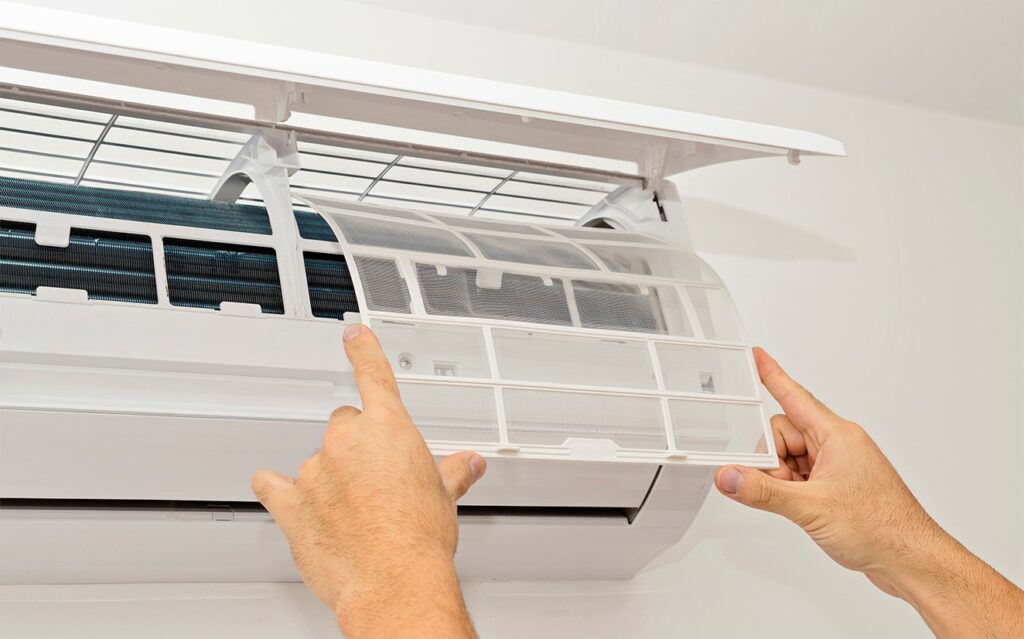As winter comes to an end, it’s important to ensure that your heat pump is well-maintained for the upcoming spring season. Regular maintenance of your heat pump can help extend its lifespan, improve its energy efficiency, and save you money on utility bills. In this article, we’ll cover some tips on how to maintain your heat pump before spring.
Clean or Replace Air Filters
The air filters play a critical role in the efficiency of your heat pump. Dirty or clogged air filters can reduce airflow, causing the heat pump to work harder and increase energy bills. It’s important to clean or replace the air filters at least once a month during peak seasons.
To clean the filters, remove them from the unit and use a vacuum cleaner or a soft brush to remove any dirt, dust, or debris. If the filters are too dirty to be cleaned, replace them with new ones. You can find replacement filters at most home improvement stores or online.
Check the Thermostat
The thermostat controls the temperature of your home, so it’s important to ensure that it’s working properly and set to the appropriate temperature. Check the batteries and replace them if necessary. If you have a programmable thermostat, make sure it’s programmed to your preferred temperature settings.
To check the accuracy of your thermostat, use a thermometer to compare the temperature reading on the thermostat to the actual temperature in the room. If there’s a discrepancy, you may need to recalibrate the thermostat or replace it altogether.
Inspect the Outdoor Unit
The outdoor unit of your heat pump is exposed to the elements, which can cause it to become dirty or damaged. To ensure that it’s working properly, inspect the outdoor unit and clear away any debris that may have accumulated on or around it.
Start by turning off the power to the unit. Then, remove any leaves, dirt, or debris that may have accumulated on the top of the unit or in the fins of the condenser. You can use a soft brush or a garden hose to gently remove any dirt or debris. Be careful not to use too much water pressure, as this can damage the fins.
Additionally, make sure that there are no bushes, trees, or other plants that are blocking the airflow around the unit. Trim any vegetation that’s too close to the unit to ensure proper ventilation.
Clean the Indoor Unit
The indoor unit of your heat pump also needs cleaning to ensure that it’s working properly. Over time, dust and debris can accumulate on the unit, reducing its efficiency. Use a soft brush or a cloth to gently remove any dust or debris from the indoor unit.
If you notice any water stains on the unit or signs of mold, it may be an indication of a more serious problem. In this case, it’s recommended that you contact a professional HVAC technician to inspect and repair the unit.
Schedule a Professional Maintenance Checkup
Consider scheduling a professional maintenance checkup for your heat pump. A qualified technician can perform a comprehensive inspection and tune-up to ensure that your heat pump is in good working order.
Professional maintenance can include checking the refrigerant levels, cleaning the evaporator and condenser coils, inspecting the electrical connections, and lubricating the moving parts. A professional technician can also detect any potential issues before they turn into major problems, saving you money on costly repairs in the future.
In conclusion, regular maintenance of your heat pump can help extend its lifespan, improve its energy efficiency, and save you money on utility bills. By following these tips, you can ensure that your heat pump is well-maintained and ready to provide efficient heating and cooling during the spring season. For more informations check out our guide How To Take Care of Your Heat Pump.





